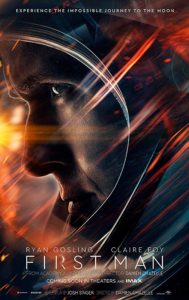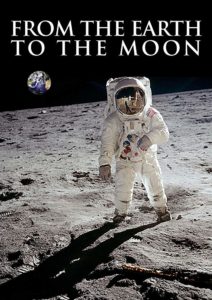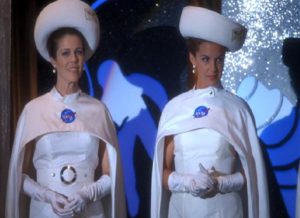The giant leap
 One of the only good things about age is to allow someone to witness a historical event, not just take notice of it from books and other records. In this regard, I consider myself fortunate, for I have not only witnessed impressive technological changes, but also accompanied monumental events throughout the middle of the last century and the beginning of the present one. One of these facts was the arrival of Man on the Moon in 1969, an event celebrated worldwide, but whose details most people know only superficially.
One of the only good things about age is to allow someone to witness a historical event, not just take notice of it from books and other records. In this regard, I consider myself fortunate, for I have not only witnessed impressive technological changes, but also accompanied monumental events throughout the middle of the last century and the beginning of the present one. One of these facts was the arrival of Man on the Moon in 1969, an event celebrated worldwide, but whose details most people know only superficially.
In 2019, one of the Oscar-winning films was “First Man,” starring Ryan Gosling, who won Best Visual Effects Award and was nominated to Sound Editing, Sound Mixing and Production Design. The movie also won the Golden Globe for Best Soundtrack and Best Supporting Actress (Claire Foy), plus seven BAFTA nominations and more than a hundred other prizes and nominations.
 The occasion was perfect for the launch of this film, since, in July 2019, it will be the half-century anniversary of the man’s arrival on the Moon. But this would be incomplete without a well-made production, which fortunately was not the case. “First Man” united a good direction (Damien Chazelle), good actors (Ryan Gosling, Claire Foy, Jason Clarke, and many others), the script of Josh Singer based on the book of James R. Hansen, good recreation of time, great visual effects, and the best that movie technology could offer.
The occasion was perfect for the launch of this film, since, in July 2019, it will be the half-century anniversary of the man’s arrival on the Moon. But this would be incomplete without a well-made production, which fortunately was not the case. “First Man” united a good direction (Damien Chazelle), good actors (Ryan Gosling, Claire Foy, Jason Clarke, and many others), the script of Josh Singer based on the book of James R. Hansen, good recreation of time, great visual effects, and the best that movie technology could offer.
The film portrays with remarkable fidelity the life of Neil Armstrong (Gosling), its difficulties, limitations, qualities and ambitions, in an interesting cut of the life of a simple man, engineer and test pilot, whose life would change, from night to day to the status of world celebrity. If there is a sin in the film it is to focus solely on it, forgetting that the arrival on the Moon was a monumental collective effort that required the dedication of hundreds of thousands of people for years to come.
 Watching this movie, a person who knows little or nothing about this historical moment will certainly have a good view of the world at that time, and the superhuman effort to overcome all obstacles and win the Space Race. Yes, because in that Cold War phase, the most important thing was to overcome the Soviet Union, which had achieved many successes, such as the launch of the first satellite (Sputnik, 1957) and the first manned orbital flight (Gagarin, 1961).
Watching this movie, a person who knows little or nothing about this historical moment will certainly have a good view of the world at that time, and the superhuman effort to overcome all obstacles and win the Space Race. Yes, because in that Cold War phase, the most important thing was to overcome the Soviet Union, which had achieved many successes, such as the launch of the first satellite (Sputnik, 1957) and the first manned orbital flight (Gagarin, 1961).
For those who want to know more about the story of the man’s arrival on the Moon, there is an HBO mini-series from 1998, entitled “From Earth to the Moon” (USA,1998), which explores not just the initial moments of NASA, as well as important details of all the flights that have managed to arrive in our satellite. This production had the active participation of Tom Hanks, who besides presenting the episodes, participated in the elaboration of the scripts and also acted in the last chapter.
 The miniseries is divided in twelve episodes, that even if obey a chronological order, have no connection with each other, and can even be watched independently. The first five episodes show the early years of NASA and the difficult preparation for space travel, following the Gemini program and the start of the Apollo program, including the horrific accident that killed three astronauts. The episodes are “Can We Do This?”, “Apollo One”, “We Have Cleared the Tower”, “1968” and “Spider”.
The miniseries is divided in twelve episodes, that even if obey a chronological order, have no connection with each other, and can even be watched independently. The first five episodes show the early years of NASA and the difficult preparation for space travel, following the Gemini program and the start of the Apollo program, including the horrific accident that killed three astronauts. The episodes are “Can We Do This?”, “Apollo One”, “We Have Cleared the Tower”, “1968” and “Spider”.
Episodes 7 to 10 show lunar missions from various angles, such as rookie Alan Bean who became the fourth person to walk on the moon, the Apollo 13 accident that left the entire world in suspense, the participation of the first American in space, Alan Shepard, in Apollo 14 mission, and the intense preparation of the astronauts in an Apollo 15 geological exploration program. The episodes are “Mare Tranquilitis”, “That’s All There Is”, “We Interrupt This Program”, “For Miles and Miles” and “Galileo Was Right”.
 Episode 11, “The Original Wives Club,” shows a virtually ignored side of the astronaut’s glamorous world, that of their wives, who, in addition to facing their husbands’ absence, and the eternal fear about their lives, still had to deal with their homes, children and even endure the harassment of the press.
Episode 11, “The Original Wives Club,” shows a virtually ignored side of the astronaut’s glamorous world, that of their wives, who, in addition to facing their husbands’ absence, and the eternal fear about their lives, still had to deal with their homes, children and even endure the harassment of the press.
Episode 12, “Le voyage dans la lune”, also shows how the last manned trip to the moon was, still shows a little of the life of Georges Méliès, a french film pioneer who spent much of his fortune to make the first movie about a trip to the Moon, which would be stolen by the American Thomas Edison and exhibited as his in the United States.
 I believe that watching the movie “First Man” and complementing it with the “From Earth to the Moon” mini-series will be an excellent program that will give the viewer not only a glimpse of what the man’s arrival on the Moon was, but the real meaning of which Armstrong meant by the great leap of Mankind in his first words upon touching the satellite ground. Check it out.
I believe that watching the movie “First Man” and complementing it with the “From Earth to the Moon” mini-series will be an excellent program that will give the viewer not only a glimpse of what the man’s arrival on the Moon was, but the real meaning of which Armstrong meant by the great leap of Mankind in his first words upon touching the satellite ground. Check it out.






